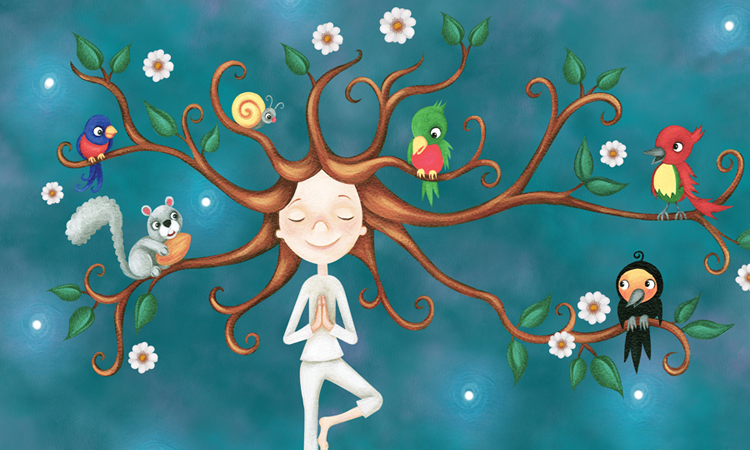
There is nothing quite like the piercing cry of your own child to bring about a sense of urgency and an immediate need to do something. But what about when that child is simply over-tired and that cry is more of a whine and includes refusal to go to sleep, or eat dinner, or put on the other shoe, etc.? What about when our child’s dissatisfaction is directed at us and we are out of options? These are maddening facts that can create a level of anger and frustration that absolutely takes a toll on our central nervous system.
Luckily, there are some simple ways to move out of the “fight or flight” response to the “rest and renew” approach when you need it most. Below are five strategies that will help relax both mother and child when you are headed toward a meltdown moment:
- Take a Really Deep Breath Taking a deep breath is the fastest way to slow the heartbeat and decrease our blood pressure. Slow and intentional breathing increases the supply of oxygen to the brain, which actually stimulates the parasympathetic nervous system, creating a much-needed sense of calm.
Try Bee’s Breath. Sit on your knees—inhale and get very long through your spine with your arms back. Exhale and lower your forehead toward the ground—buzzing all the way down.
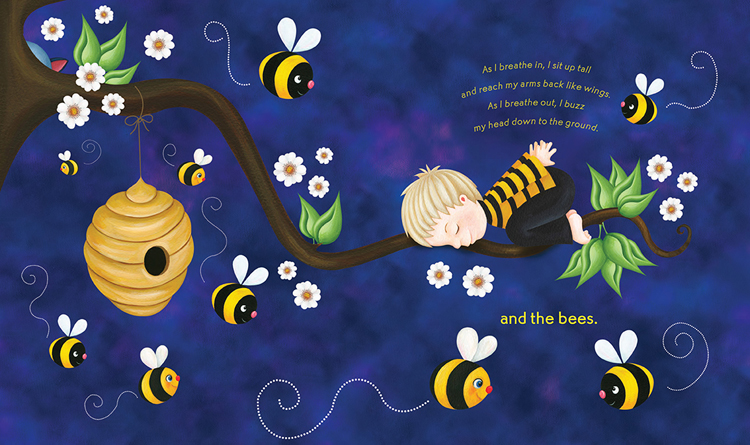
- Try Re-Focusing (or Mirroring). It can be helpful to let your child know what you are seeing: “I see that your eyebrows are really clenching and you’re making tight fists.” The idea is to bring the child’s awareness into his or her body and use that connection to help anchor what they are feeling on a physical level. A moment or two of noticing those strong sensations can help to calm and ground a child when he or she is not able to express what they are feeling on an emotional level. It is also a way to let them know that you are there with them in it.
Try Tree Pose. Become tall in your spine. Rest your foot on your ankle or above your knee and balance. Then switch feet. Let your child know you are taking a moment to pause and try to refocus there and ask them to do the same.

- Move a Muscle/Change a Feeling: Stretching our legs or taking a walk around the block is a great way to “clear our head,” but not always available to us as parents. Still, some movement in the moment can be key in helping us gain a shift in perspective. What is hard about stress is it overwhelms us and tends to make us forget that the moment we are in is temporary. So even if we are reacting to something that will ultimately need our attention (for example, creating a new morning routine for getting out the door) the overwhelming emotional experience will not remain. Getting ourselves (and our kids) moving can help remedy that tight stuck feeling.
Try Half Moon. Inhale and bring your palms together over your head, lengthen your spine. Exhale and bend gently to one side, then the other side—breathe.
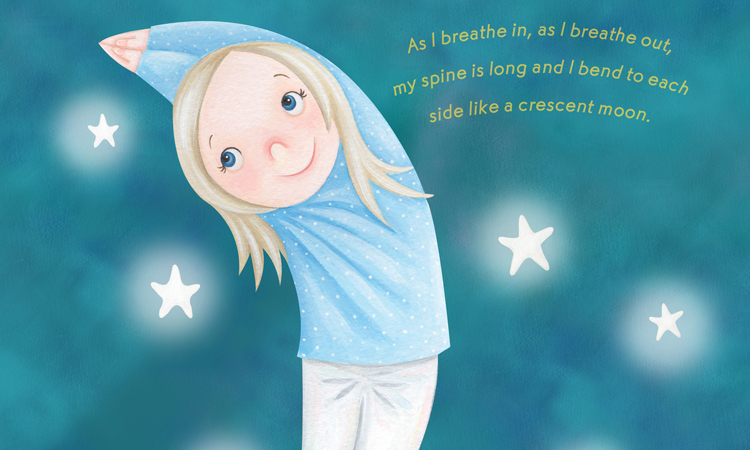
- Pay Attention (without trying to change anything). The practice of paying attention to the present moment (also called “the practice of mindfulness”) can help shift us out of mental and emotional stress and into a calm connection to our bodies and the world around us. It is as simple as coming into an easy pose (see Butterfly illustration below)and then really noticing what is happening around you, starting with your body’s physical sensations. Take a body scan: Focus your attention starting with your toes all the way to the top of your head. How does your body feel in this seated position? What is the temperature of the air as it enters your nostrils? Bringing attention to sensation and breath without trying to change anything has a powerfully calming effect.
Try Butterfly Pose. Sit on the ground, press the soles of your feet together, get long through your spine and roll your shoulders back—breathe.
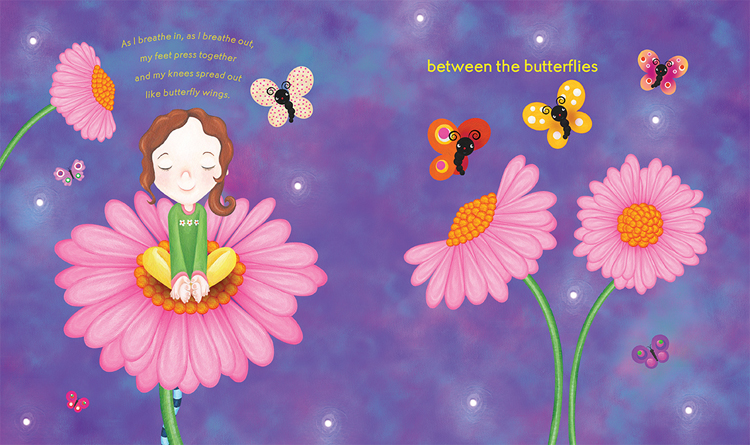
- Try Visualization or Imagery. There are moments where giving a child a new visualization or image to focus on can also go a long way to calm an agitated central nervous system. The Cloud Journey Visualization is a way to support a frustrated child to use his or her own imagination to create a new perspective. It can be helpful to offer this alternative activity when you see that your child is reaching his or her limit. The other benefits of the Cloud Journey Visualization is that it offers a child choice in terms of what he or she creates in her mind (which is empowering in these difficult moments), and kids love it.
Try Cloud Journey Visualization: Lie on your back with your hands by your sides. Take a deep breath in . . . and let a long breath out. Imagine you are lying on a white, puffy cloud. Feel how good it is to be there. Breathe in. Breathe out.
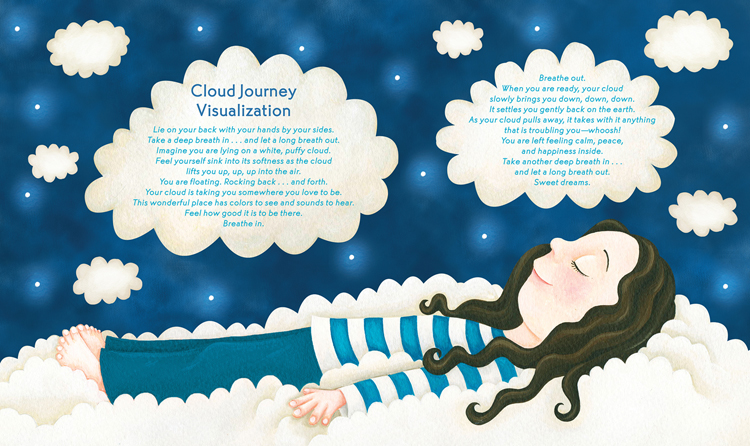
Adapted from Good Night Yoga: A Pose-by-Pose Bedtime Story by Mariam Gates. Illustrations by Sarah Jane Hinder. © 2015 Mariam Gates. Illustrations © Sarah Jane Hinder. Published by Sounds True in April 2015.
Click here to see Rose’s tips for healthy and happy relationships
Post Disclaimer
This content is for informational purposes only and does not constitute medical advice. Please consult a healthcare professional for any medical concerns.

